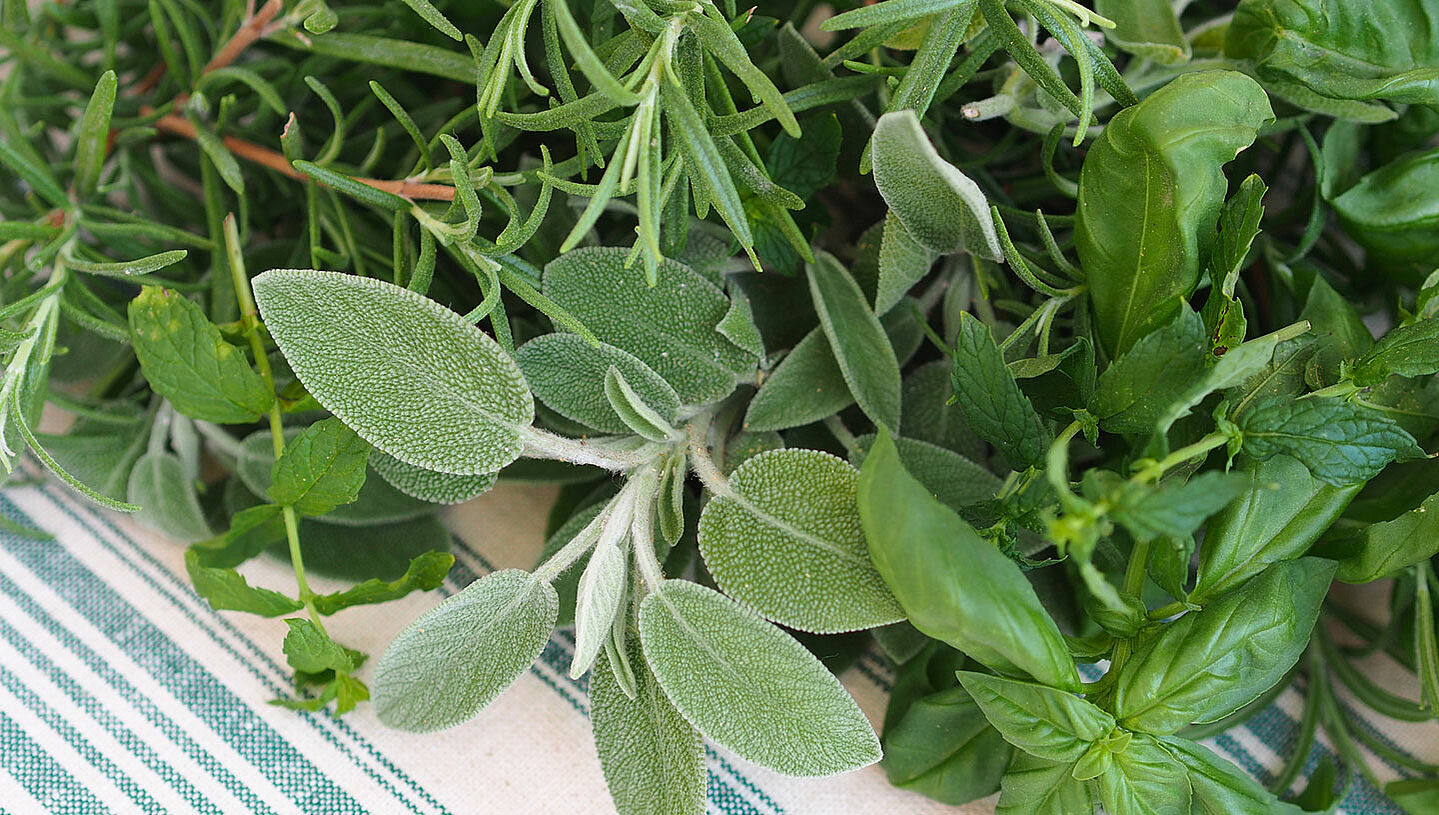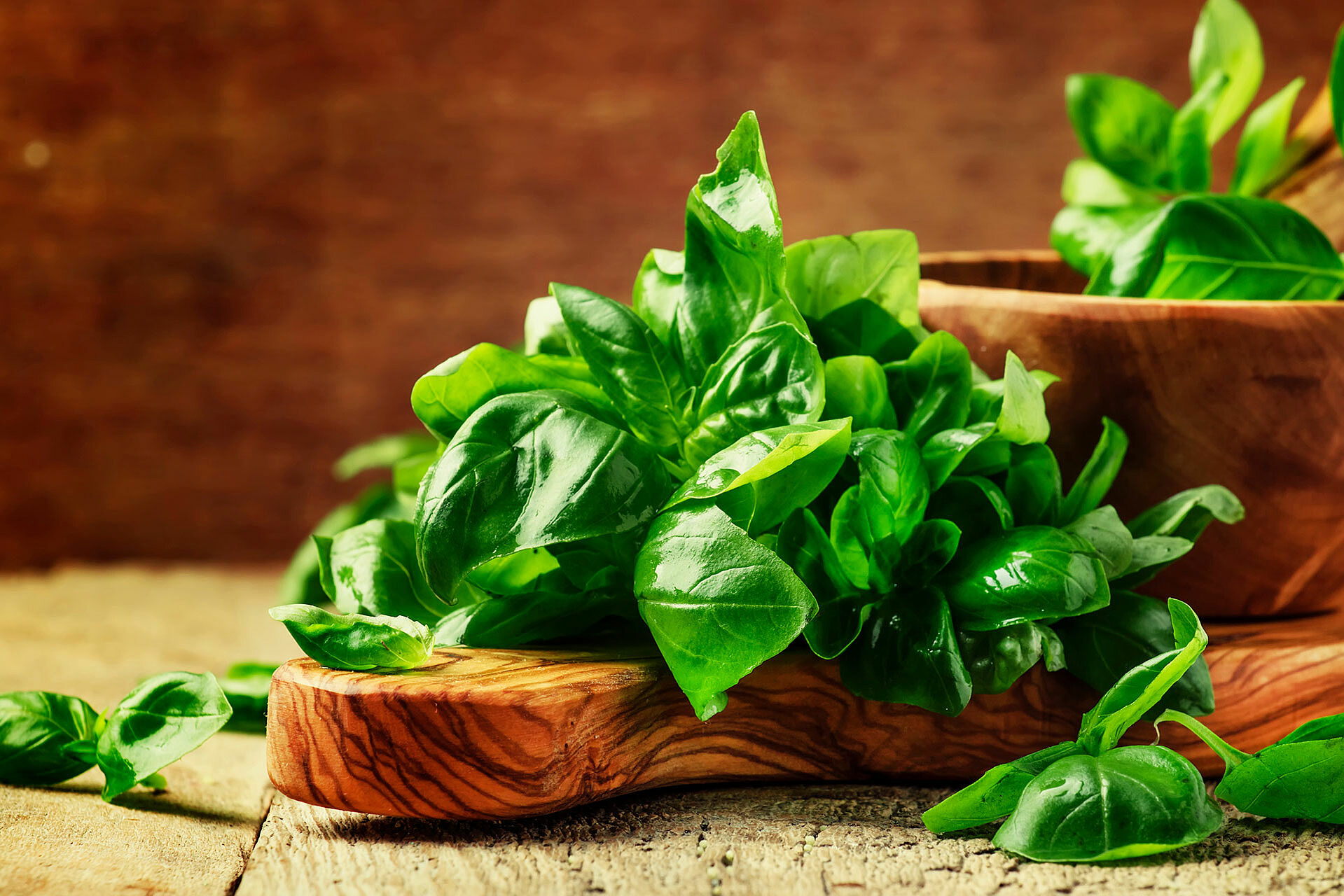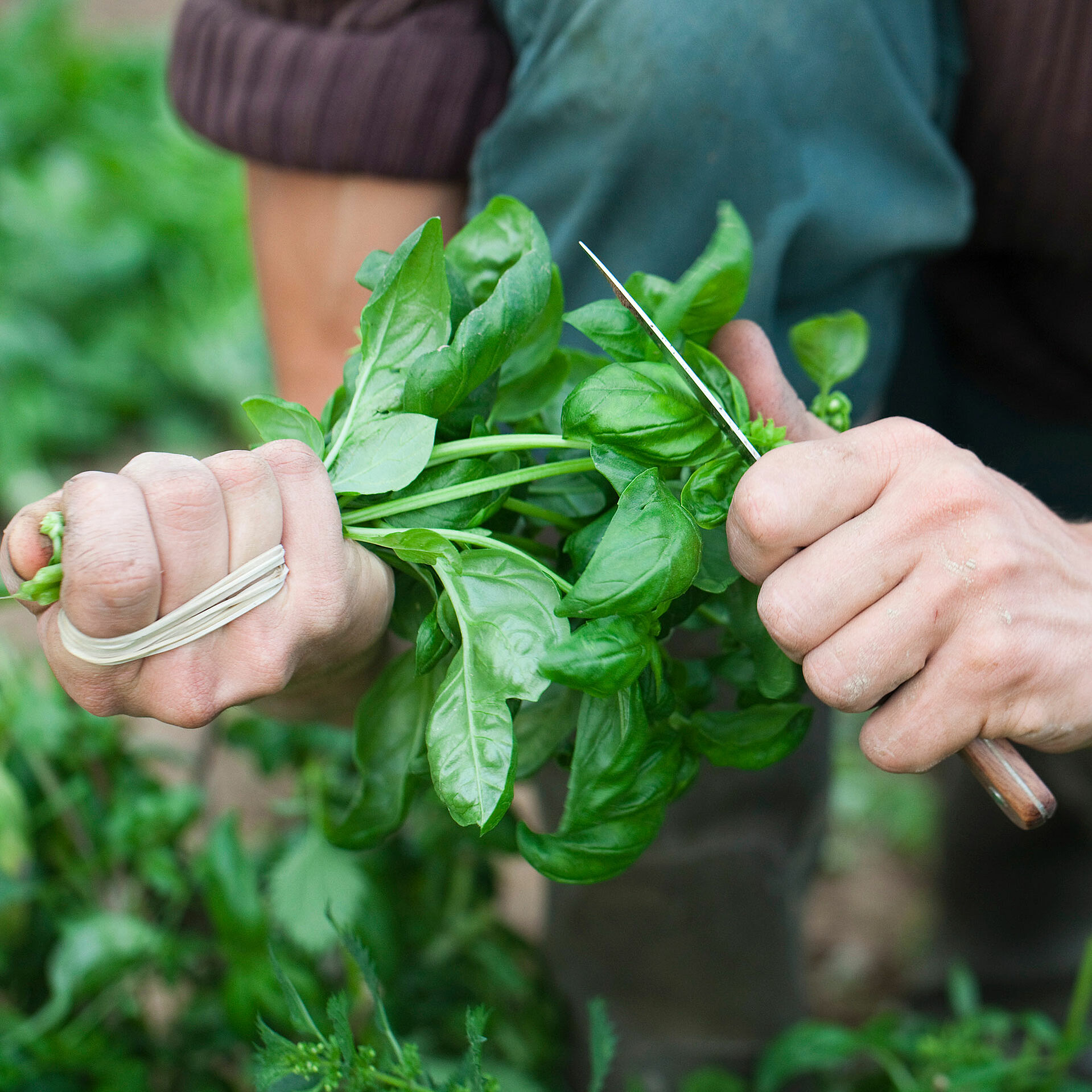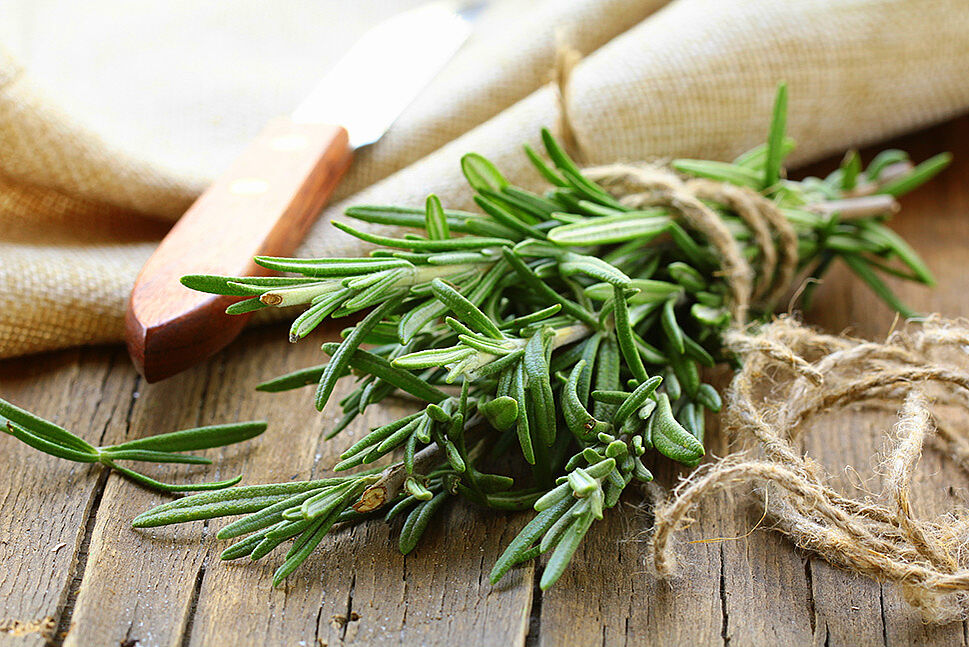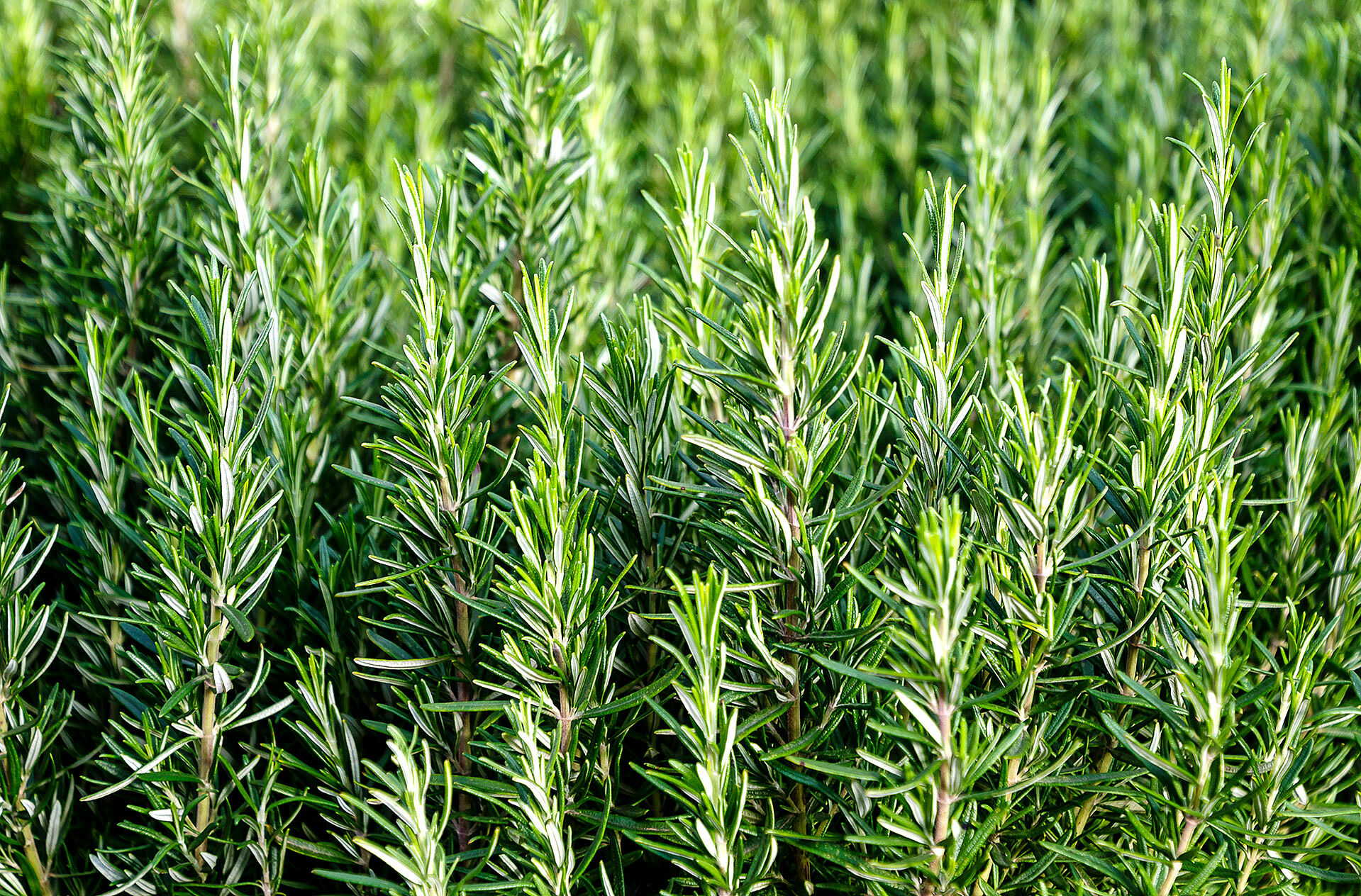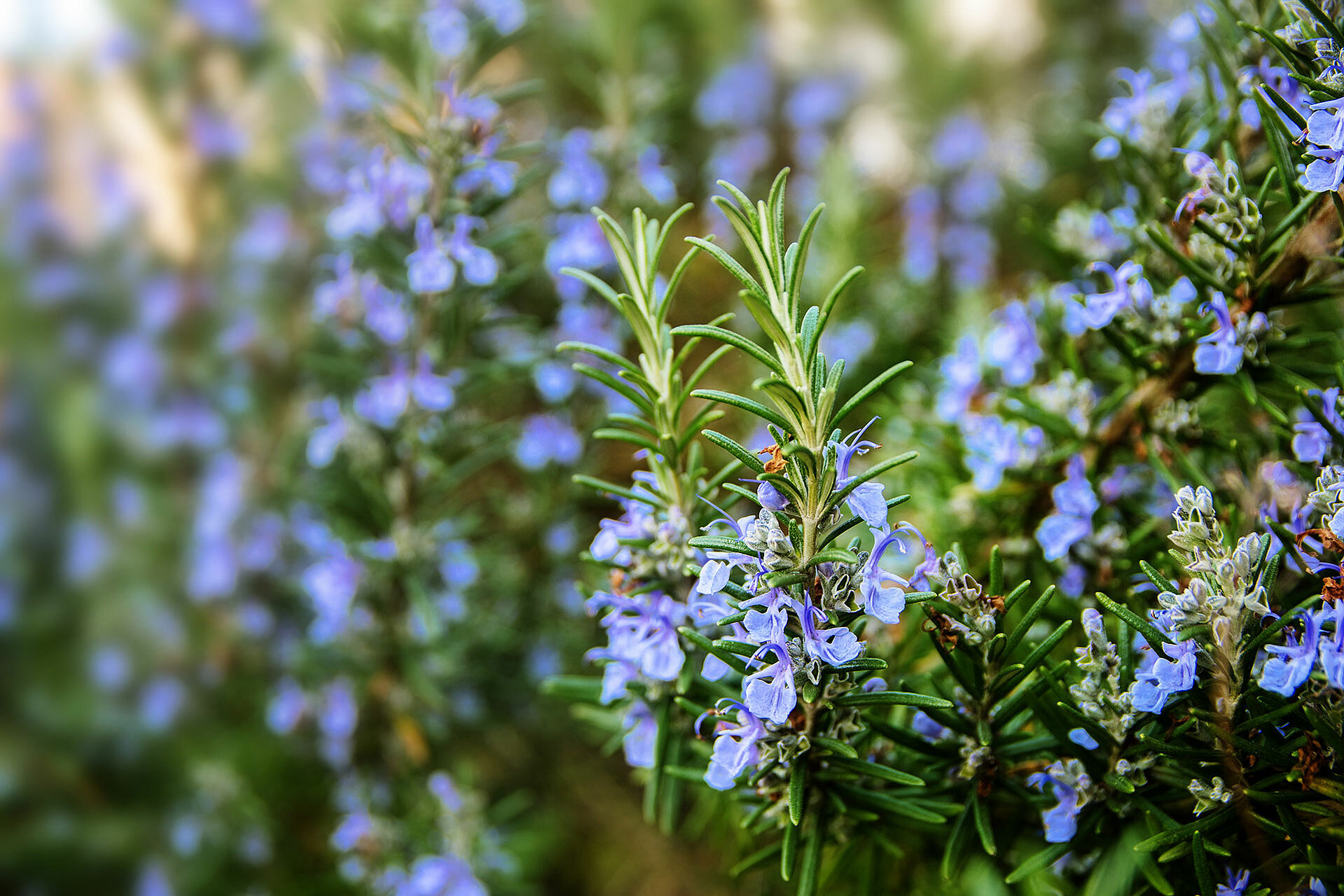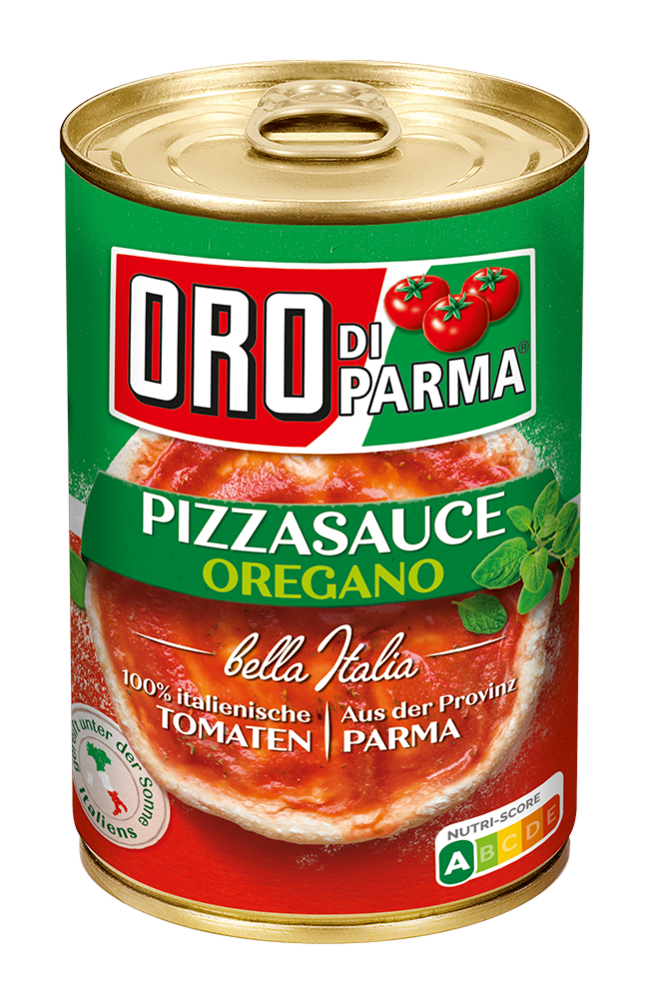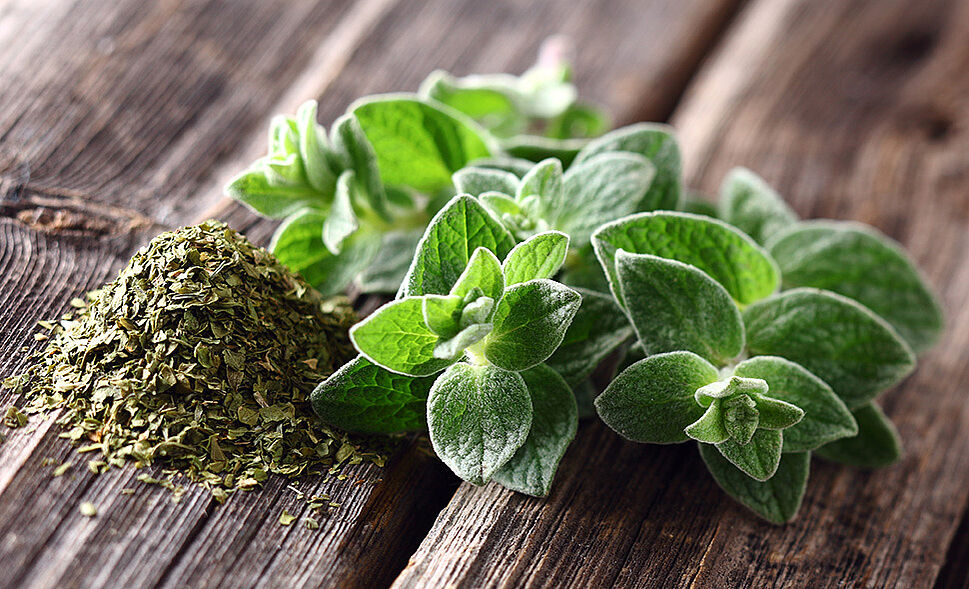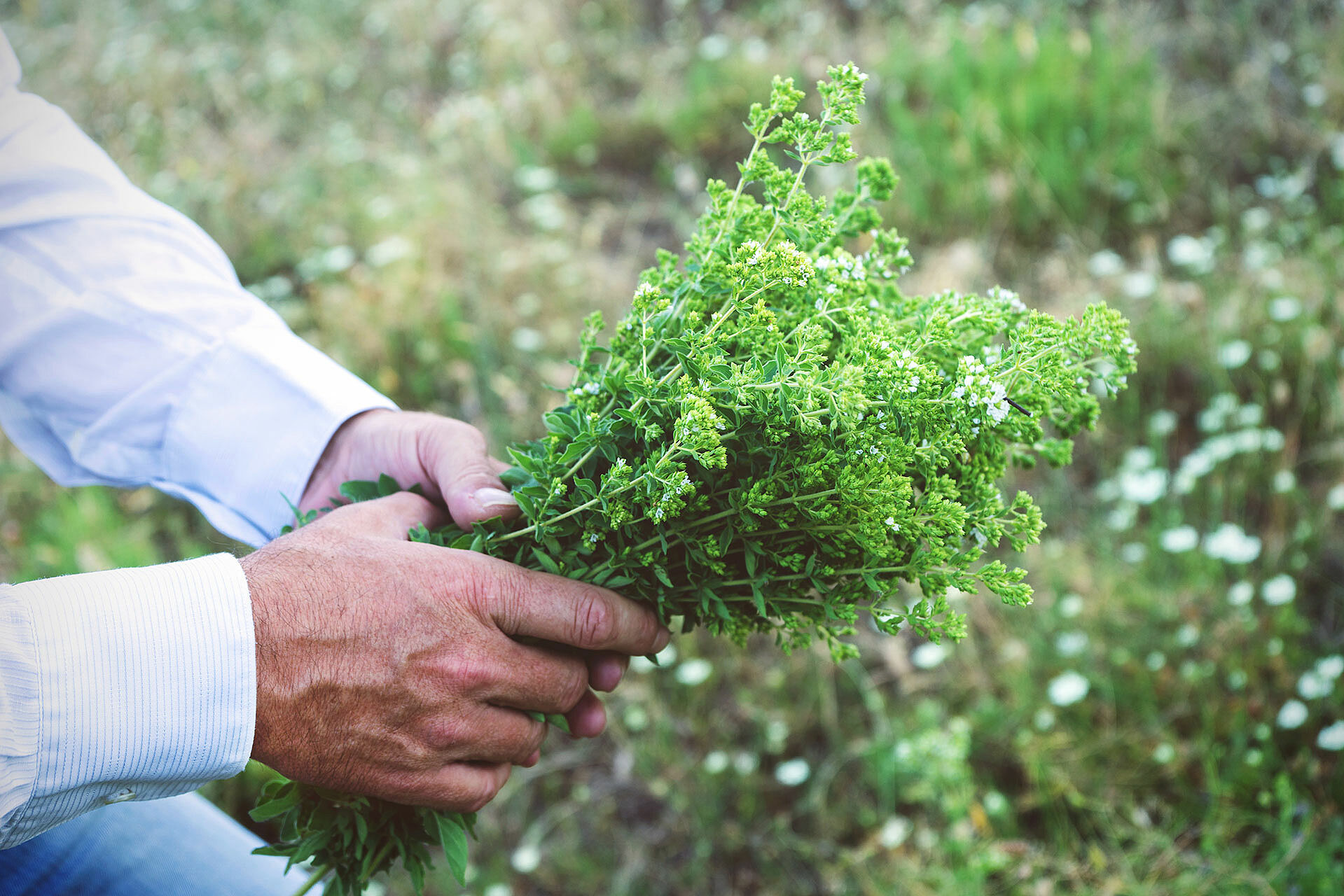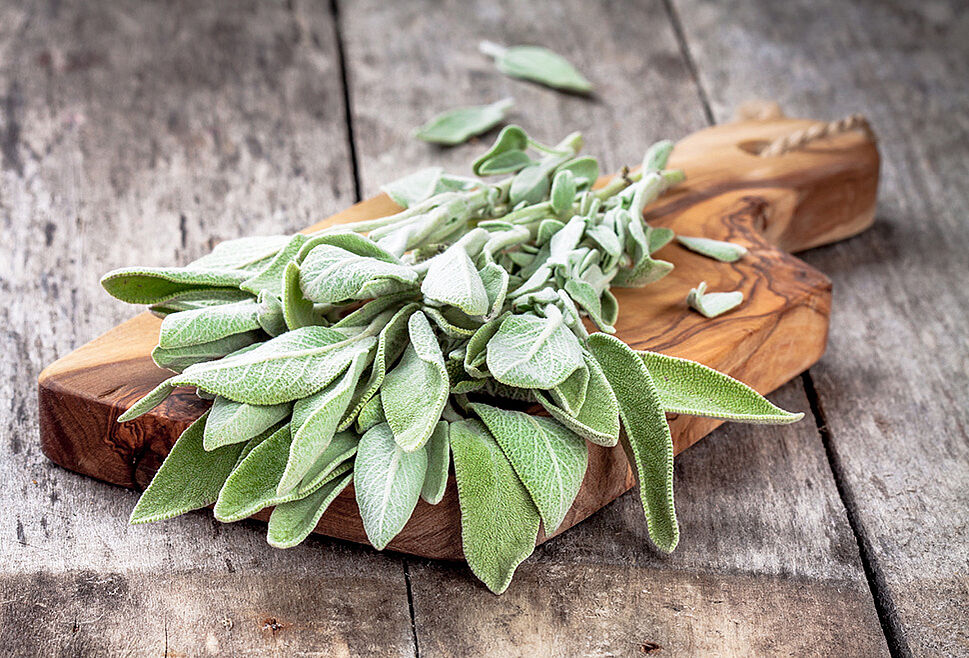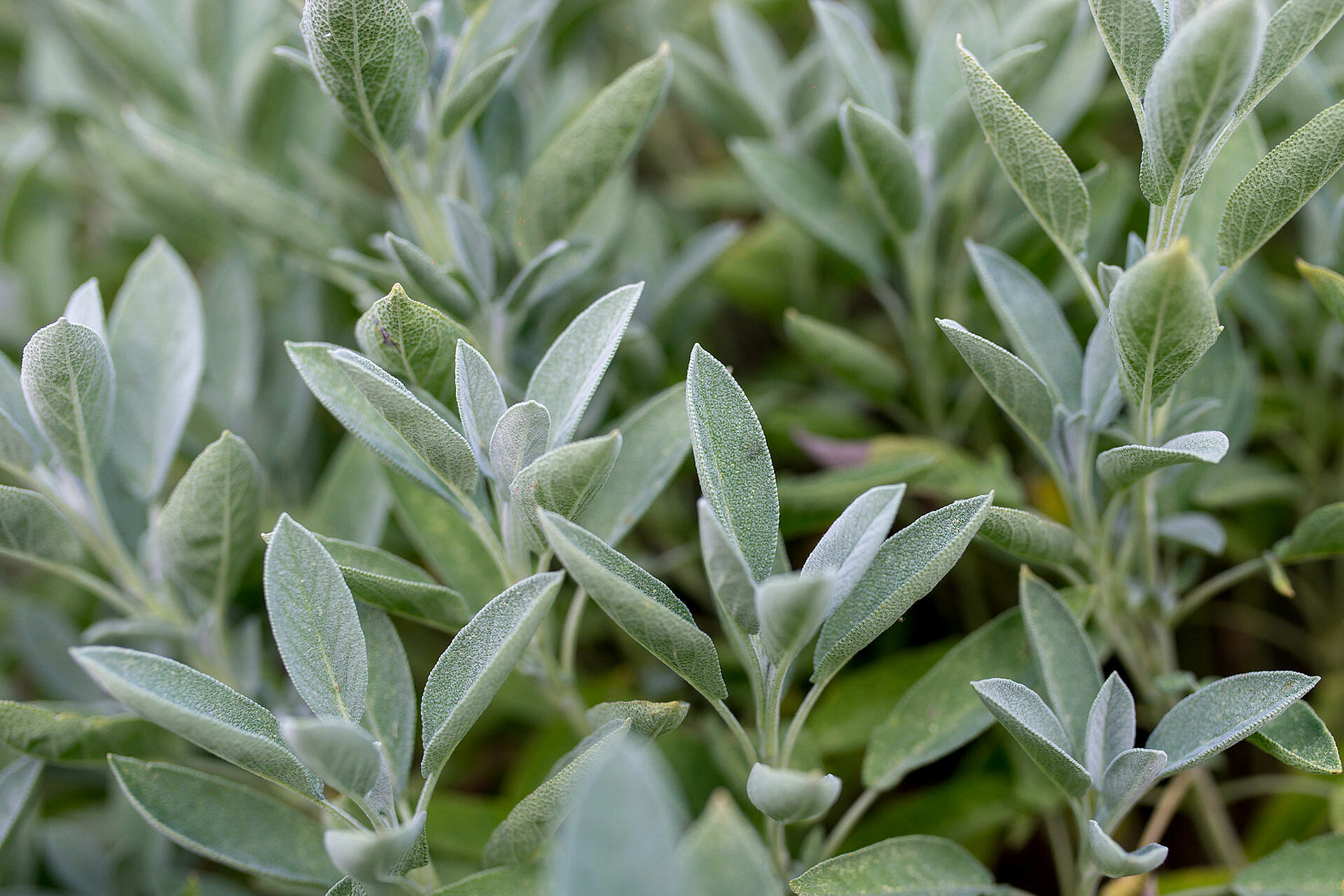Italian cuisine does not thrive on the most unusual ingredients, but on the best possible ones. This also applies to herbs: with just five herbs you can cook (almost) all Italian recipes - and bring a wonderful aroma to your dishes. If you can grow the herbs yourself, all the better. Otherwise, the weekly market is a good alternative. There you will find especially robust and spicy herb pots. Preferably fresh or frozen - and only dried in an emergency. With the right herbs, each of your Italian dishes will be an aromatic delight.
Basil is the royal herb
Basil (ital. "basilico") is probably the best known and most popular herb in Italian cuisine. It is also called the royal herb. No wonder, after all, it "ennobles" many dishes: for example, the antipasti classic Caprese with fruity tomatoes or a wonderfully aromatic pesto with fresh, homemade pasta. It also gives this gnocchi recipe an intense color and the typical mild basil flavor. In general, tomato and basil always form a wonderful culinary liaison in Italian cuisine. Basil is an excellent accompaniment to meat, fish and soups. By the way: Basil is also suitable as a special fresh kick in lemonades or cocktails - especially in summer a varied refreshment.
Your basil dies quickly? No problem, we have a few tips for you to help your basil plant survive longer!
1. water regularly with room-warm water
2. water only the soil and not from above
3. sunny place, for example on the windowsill
Rosemary - Dew of the Sea
The name rosemary (ital. "rosmarino") comes from the Latin "ros marinus" and means "dew of the sea": The shrubs thrive magnificently on the Mediterranean coasts, where the dew settles on flowers and twigs at dawn. Especially game dishes get a very special flavor from rosemary, but also to recipes with beef, pork and poultry fits the evergreen herb wonderfully.
Do it yourself: Rosemary oil
Small souvenir from your own kitchen? Then simply conjure up a delicious rosemary oil. Choose a suitable olive oil, put the washed and dried rosemary twigs in a clean glass bottle and fill it up with the olive oil. Stored airtight and in the dark, the oil will keep for about four weeks. The rosemary olive oil is suitable for frying and marinating but also for crisp salads.
Thyme – the warmer, the spicier
Thyme (Italian “timo”) gives soups, sauces, broths and stews a spicy-sweet note. Of the more than 100 varieties, the "true thyme", also known as garden thyme, is the most widespread in the kitchen. The herb gives particularly hearty dishes with lamb, pork or beef the right flavor. Thyme goes particularly well with garlic and basil - for example in a fruity tomato sauce, which you can vary with thyme - or with stir-fried vegetables with aubergine, zucchini or potatoes.
With lemon thyme, you can give your fish dishes and seafood a summery kick of freshness - and thyme is indispensable in this dip for mozzarella sticks. Interesting: The herb only develops its intense flavor at high temperatures and is therefore added during the cooking process. Be careful with dried thyme: it is much more flavorful than fresh thyme.
Oregano - star of the pizza
Oregano (ital. "origano") is especially widespread in southern Italian cuisine - it belongs in many pizza sauces and as a decoration on many pizzas - for example, on a pizza with anchovies. Oregano is also often used in sausage. The seasoning power of oregano intensifies through drying - so dose carefully.
By the way: In German cuisine you can often find a close relative of the Italian favorite oregano: marjoram.
Sage is particularly spicy and digestible
Bitter and spicy, that's how sage (Italian: salvia) smells and tastes. With more than 900 different species, it is not easy to choose the right herb for the home herb garden. The undisputed favorite in the kitchen is true sage - also known as clary sage. If you like it more exotic, try lime, pineapple or marzipan sage.
Sage is popular for meat dishes and is essential in the preparation of saltimbocca, for example.
Sage also brings the right flavor to soups, grilled fish or a spicy penne gorgonzola. If you need more of a light note of sage for your dish, use the young leaves of your plant - for more intensity, the older ones are great. Very simple and highly aromatic: sage tossed in butter in a classic pasta sauce - goes perfectly with fresh gnocchi. By the way: fatty foods are made more digestible by sage, this beneficial effect was already known in ancient times.
Preserving fresh herbs
Freeze herbs in portions
Robust herbs such as rosemary, thyme, oregano and sage can also be conveniently preserved by freezing them: clean and finely chop the leaves, fill them into ice cube trays and pour on a good olive oil. The ice cube tray then goes into the freezer. You can add the portioned herbs or herb mixes to your favorite dishes this way, even if you don't have the fresh shrub on hand. Only the basil should not end up in the freezer: It will turn brown and lose its flavor.
Make your own herb oil
The freezer is already full? No problem, herbs also keep well in olive oil without being frozen. With your own herb oil you can easily refine your Italian dishes and give them the typical Mediterranean aroma.
Drying herbs
Another way to enjoy Italian herbs for a long time is to dry them. How exactly this works and how long the drying time of the typical Italian herbs are, we have summarized in our kitchen secret about drying herbs.
The difference with herbs of Provence
In supermarkets you can often find "herbs of Provence". But be careful, these herb mixtures are rather intended for French cuisine. Although herbs de Provence also contain some herbs from Italian cuisine, they often also contain lavender and occasionally juniper berries, chervil or fennel seeds.

